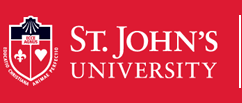Date of Award
2025
Document Type
Dissertation
Degree Name
Education (Ed.D.)
Department
Administrative and Instructional Leadership
First Advisor
Barbara Cozza
Second Advisor
Richard Bernato
Third Advisor
John N. Spiridakis
Abstract
his quantitative correlational research study investigated the impact of Career and Technical Education programs on the graduation rates of Hispanic high school students. Specifically, this study discussed the challenges our Hispanic students face in our public school system regarding access to quality education that prepares them to graduate and be college and career ready. The study relied upon Kolb's experiential learning theory model, which divides the learning experience into four modes. 1. Concrete experiences 2. Passive reflective observation 3. Abstract conceptualization 4. Active Experimentation. According to Kolb & Kolb (2005), experiential learning theory and real-life learning in the context of career and technical education programs can significantly enhance academic achievement. Utilizing Kolb's framework and national data from the High School Longitudinal Study (HSLS:09), this study analyzed the following: (1) What is the difference in high school graduation rates between Hispanic and non-Hispanic students? (2) What is the difference in the number of CTE credits earned by Hispanic and non-Hispanic students? (3) To what extent are CTE credits earned related to the High School graduation of Hispanic students? The sample of this study consisted of a subset of 3,797 Hispanic students. A Chi-square statistical analysis was used to compare high school graduation rates of Hispanic and non-Hispanic students. An independent T-test analyzed the difference in the number of CTE credits earned by Hispanic and non-Hispanic students. A logistic regression was used to analyze the extent to which CTE credits earned are related to the high school graduation of Hispanic students. The present study is significant because the graduation rate of Hispanic students is 82% compared to the general student population's rate of 86% (NCES, 2023). Career and technical education programs can become the equalizing factor the Hispanic community can rally behind, as many Hispanic immigrant students travel from all over the world to this country to achieve the American dream through hard work and trade.
Recommended Citation
Fernández, José M., "THE IMPACT OF CAREER AND TECHNICAL EDUCATION PROGRAMS ON HISPANIC HIGH SCHOOL GRADUATION" (2025). Theses and Dissertations. 968.
https://scholar.stjohns.edu/theses_dissertations/968
